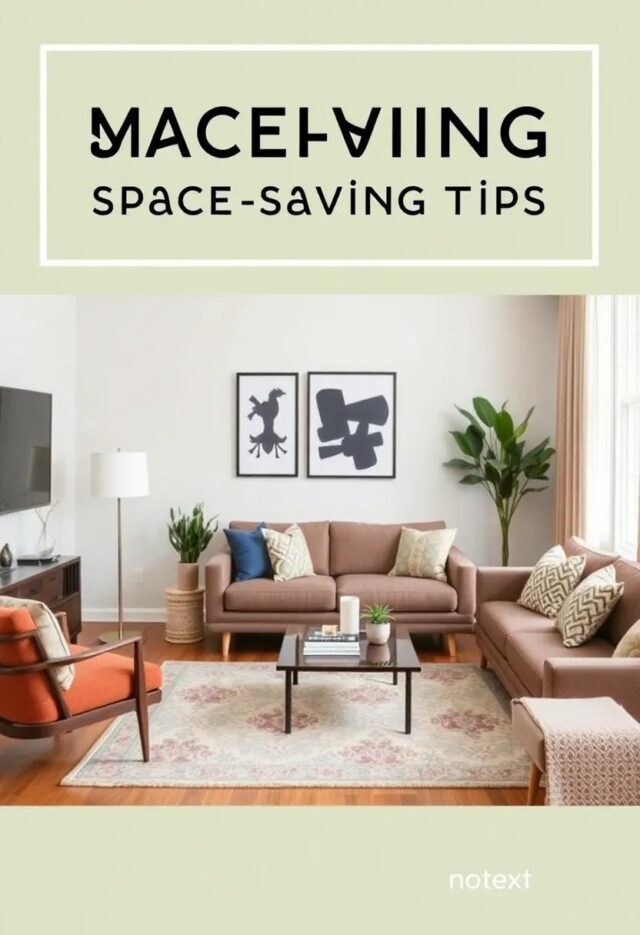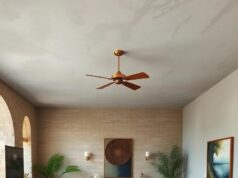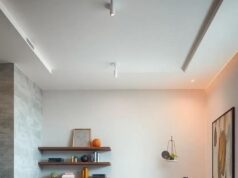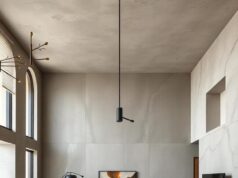In a world where living spaces are becoming increasingly compact, small living rooms present both a challenge adn an opportunity for creativity. The key to transforming these intimate areas lies in maximizing style and functionality without sacrificing your aesthetic vision.Weather you’re navigating the cozy confines of an apartment or looking to optimize a snug corner of your home, this article is designed to inspire you with innovative space-saving tips that blend practicality with flair.From clever furniture choices to clever decor strategies, we’ll explore how to create a harmonious surroundings that not only showcases your personal style but also offers the comfort and livability you desire.Join us as we dive into the art of making every inch count, proving that even the smallest rooms can be big on style.
Discovering Vertical Living: embracing Height to Create an Inviting Atmosphere
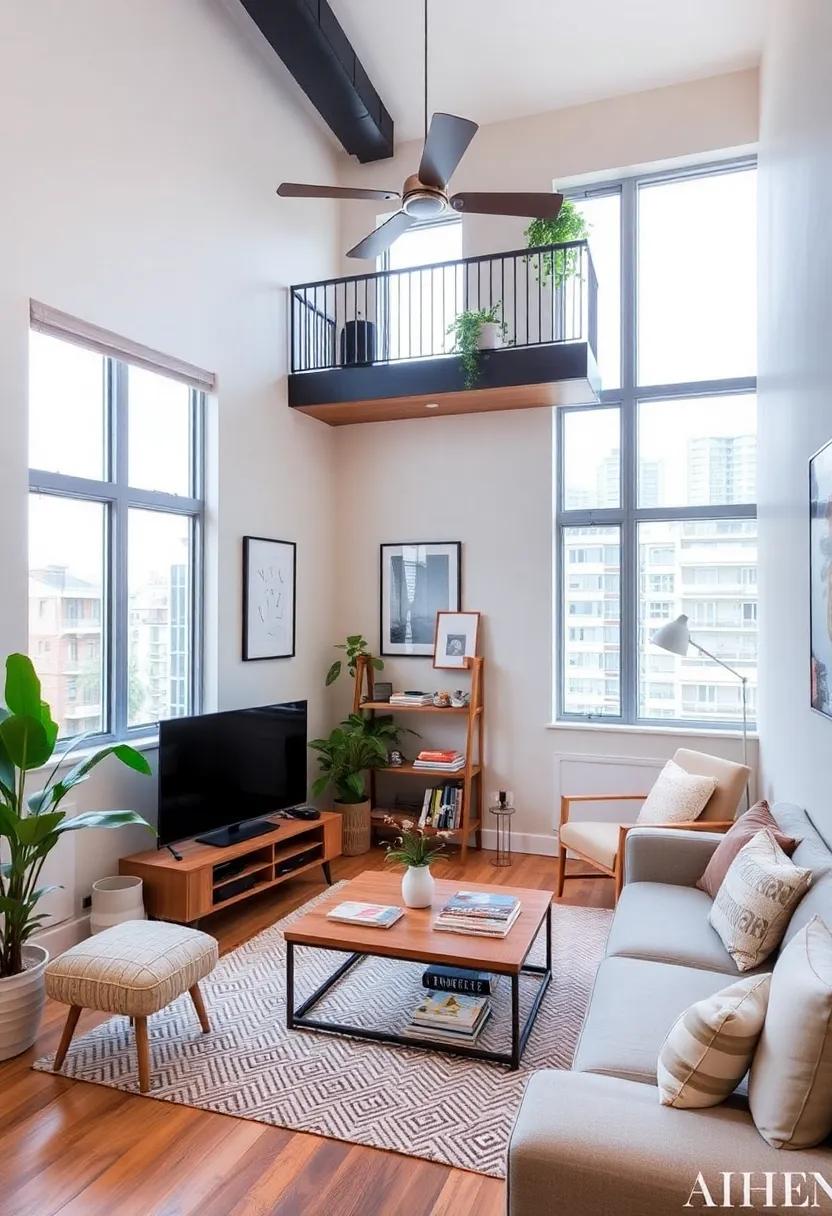
Transforming your small living room into an inviting oasis can frequently enough be achieved by taking advantage of vertical space. Instead of spreading furniture and decor across the floor, consider creating a visual flow upwards that draws the eye and maximizes the perceived height of the room.You can utilize tall bookshelves, wall-mounted art, or vertical gardens to create a sense of depth. Additionally, placing furniture with leggy profiles—such as lightweight chairs or slim sofas—allows light to filter through, enhancing the spaciousness of the area.
Incorporating vertical elements not only improves the aesthetics but also provides practical solutions for space optimization. A well-placed overhead light fixture, perhaps a chic pendant or chandelier, can become a focal point while freeing up space on tables and surfaces. When selecting decor, remember to opt for multi-functional pieces that can serve various purposes.Such as, a tall storage unit can house books, collectibles, or even serve as a display for plants. Creatively styling floating shelves with plants, photographs, and books can make your walls work harder while presenting a curated look.
Innovative Furniture Solutions: Versatile pieces that Adapt to your Lifestyle
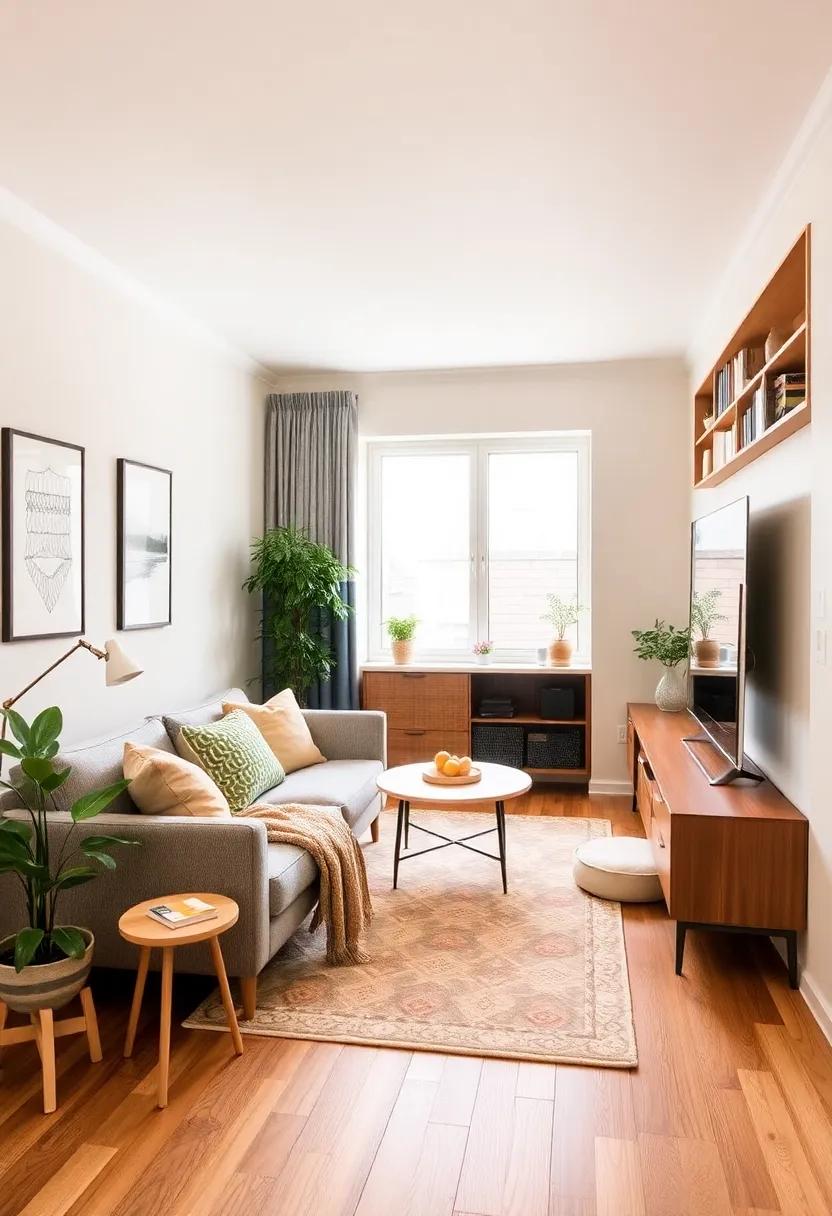
When it comes to small living rooms, furniture that adapts to your needs can make a world of difference. Look for pieces that offer dual functionality; as an example, a stylish ottoman that doubles as storage or a sleek sofa bed that transforms for guests.Embrace modular furniture which can be rearranged based on your space and occasion, allowing you to create an open feel when hosting or a cozy corner when unwinding after a long day.Additionally, consider foldable tables which provide flexible dining options without sacrificing style.
Another innovative approach is to incorporate multi-purpose furniture like a coffee table with a lift-top and hidden compartments or bookshelves that can act as room dividers. This not only maximizes space but also adds character to your decor. when selecting colors and materials, lean towards light hues and reflective surfaces; they can create an illusion of more space while maintaining elegance. With the right choices, every piece in your living room can reflect your personality while serving a purpose, blending practicality with aesthetic appeal.
| Furniture Type | Functionality |
|---|---|
| Ottoman | Storage + Seating |
| Sofa Bed | Seating + Sleeping |
| Foldable Table | Dining + Compact Storage |
| Lift-Top Coffee Table | Storage + Workspace |
| Bookshelf Room Divider | Display + Space Separation |
The Art of Multifunctional Design: Merging Aesthetics with Practicality
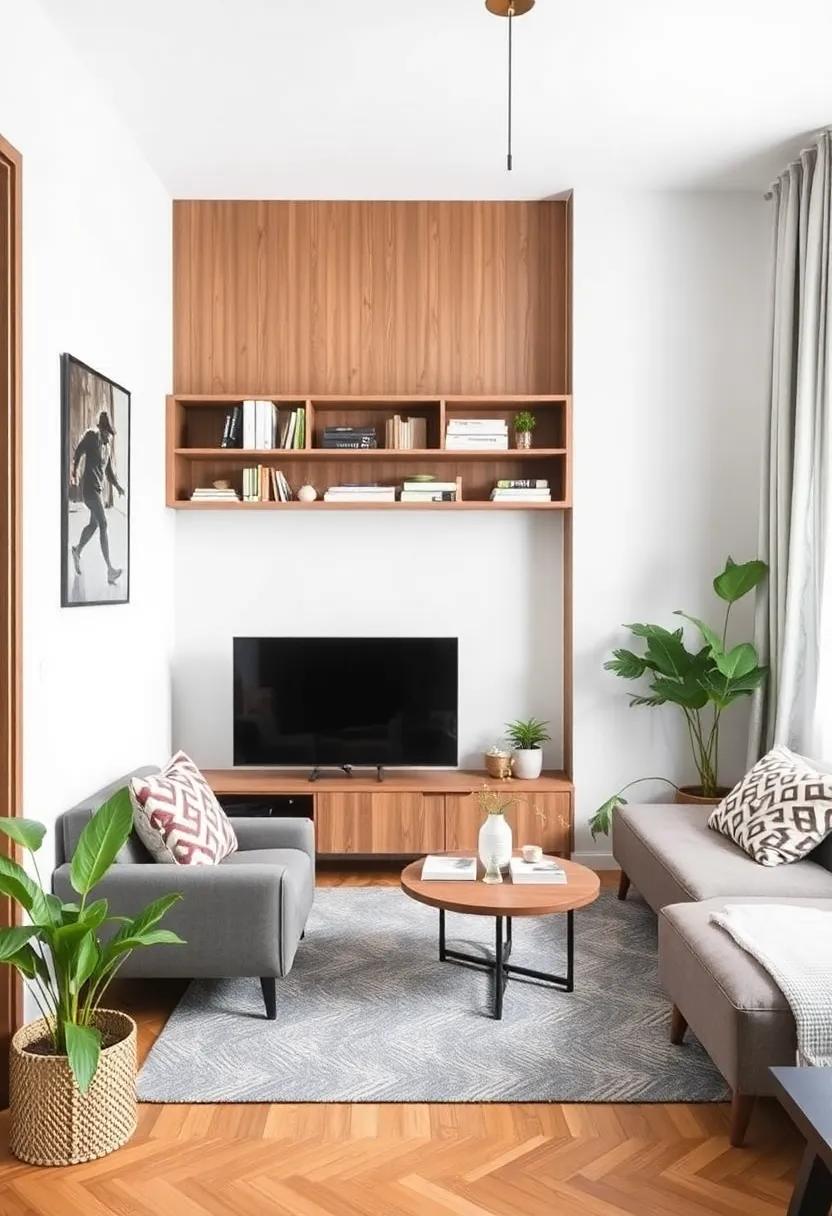
In a world where space is often a luxury, the balance between aesthetics and functionality becomes an art form in itself. Transformative furniture that folds away or can be repurposed plays a crucial role in maximizing both style and utility. Consider the beauty of a chic coffee table that doubles as storage, or an elegant ottoman that can become additional seating when entertaining guests.Functionality doesn’t have to compromise style; instead,it can enhance it. Opting for furniture pieces with clean lines and a minimalist design can create an airy atmosphere, while also serving practical needs, manifesting how artful design can create harmony in smaller spaces.
To elevate your living room further, embracing a layered approach can add depth without sacrificing valuable real estate. Utilize vertical space to add visual interest and keep your floor clear, which helps create a more expansive feel. Some effective strategies include:
- Wall-mounted shelving: Display books and decor to draw the eye upward.
- Mirrored accents: reflecting light can enhance the perception of space.
- Multi-use textiles: Soft poufs or throw blankets can be stylish and function as extra seating.
Incorporating these elements results in a living room that doesn’t just look good but feels good to live in, showcasing the perfect marriage of artistry and practical living. Here’s a simple table illustrating the balance of aesthetics and functionality:
| Furniture Piece | Functionality | Aesthetic Appeal |
|---|---|---|
| Lift-top Coffee Table | Hidden Storage | Modern Design |
| Convertible Sofa | Guest Bed | Stylish Upholstery |
| Wall-mounted Desk | Workspace | Minimalist Look |
Choosing the Right color Palette: Bright Hues to Enhance Small Spaces
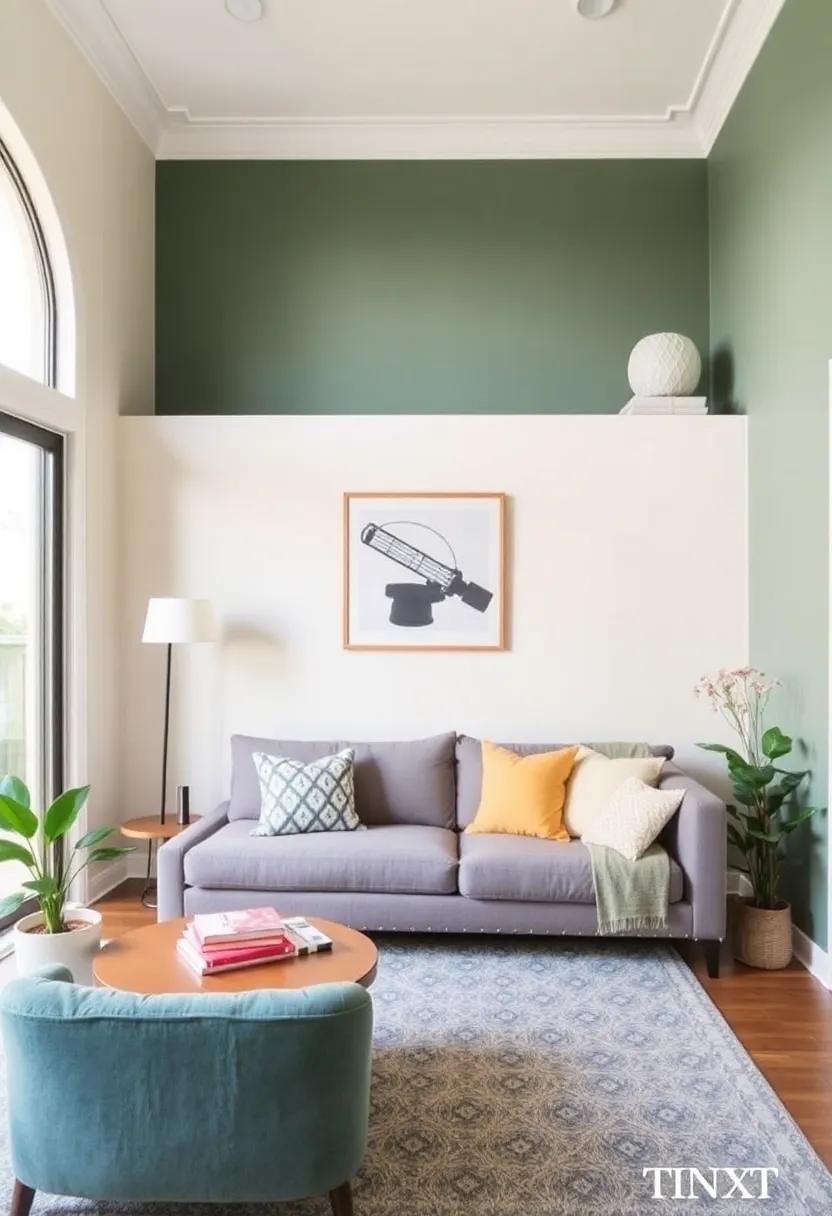
When working with a small living area, bright hues can significantly alter the perception of space. Opting for color schemes that infuse energy and light can make your cozy nook feel expansive. Consider shades such as soft lemon yellow, sky blue, and gentle coral to create a vibrant atmosphere. Pair these with crisp white accents to maximize brightness and outline architectural features, enhancing the overall aesthetic. Incorporate these colors in various elements such as:
- Accent walls that draw the eye upward, creating an illusion of more height.
- Cushions and throws that add bursts of color without overwhelming the space.
- Artwork in bright frames that serve as focal points while maintaining a light vibe.
Your furniture choices can also align with this lively palette. Select pieces that are lightweight in color and design, which won’t clutter the visual space. To bring everything together, think about a cohesive color strategy using complementary tones.A simple table can help illustrate a decorative approach:
| Color | Effect | Best Used With |
|---|---|---|
| Soft Lemon yellow | Brightens and adds warmth | Whites and light grays |
| Sky Blue | creates a calming atmosphere | Beiges and sandy tones |
| gentle Coral | Invigorates and adds a pop | Whites and wooden textures |
Illuminating Your Space: Strategic Lighting to Expand Visual Dimensions
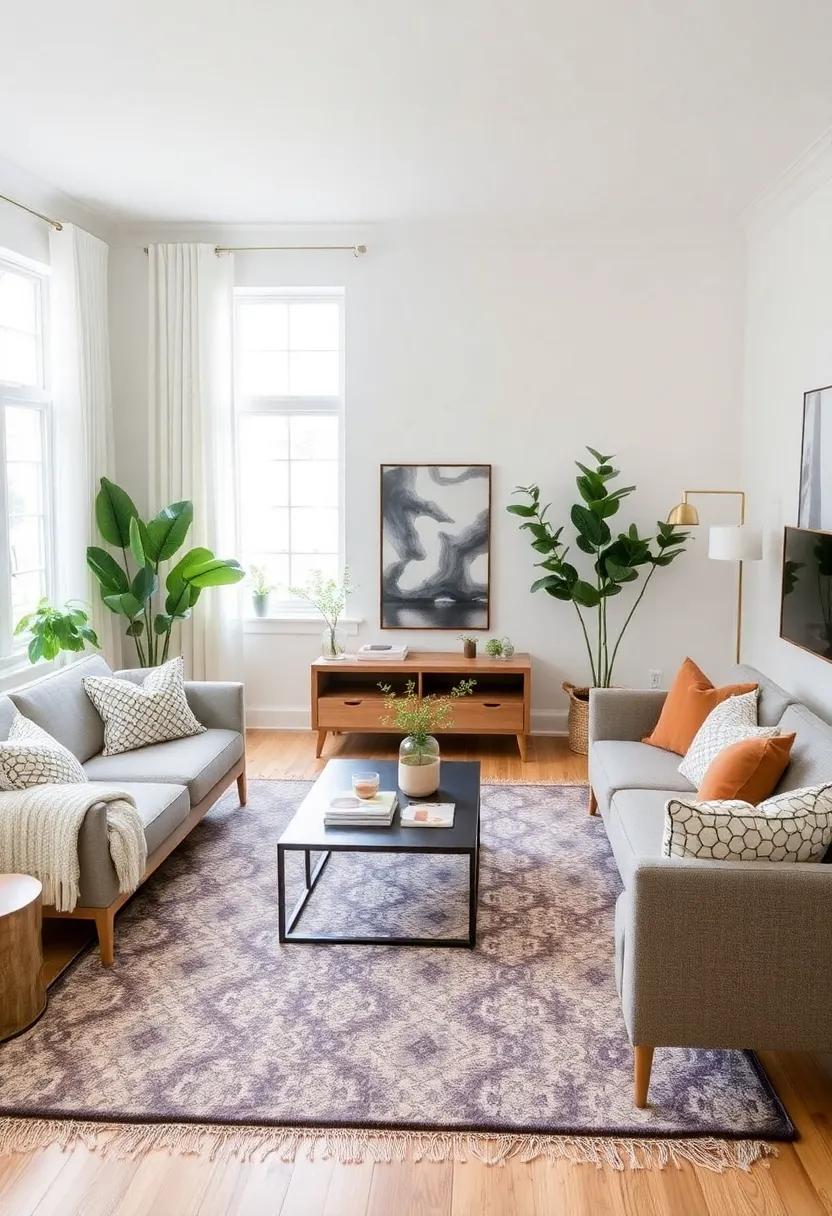
To create an illusion of space in a small living room, strategic lighting is essential. By incorporating layered lighting—a combination of ambient, task, and accent lighting—you can define different areas within the room while simultaneously adding depth. Start with ceiling fixtures that provide general illumination,and complement them with floor lamps or table lamps positioned in key spots. This combination will not only add functionality but will also draw the eye upward, making ceilings feel higher and the room more open.
Consider using light colors for lampshades and bulbs to enhance the brightness of your space. Warm white LEDs can create a cozy atmosphere, while adjustable dimmers allow you to control the mood as needed. Additionally, strategically placed mirrors can reflect light, amplifying the sense of openness. Here are some effective lighting options to explore:
- Wall sconces: Save space while adding style.
- String lights: Create a magical ambiance with minimalist decor.
- Recessed lighting: For a clean, modern look.
Layered Textures: How Fabrics Can Transform the Feel of a Room
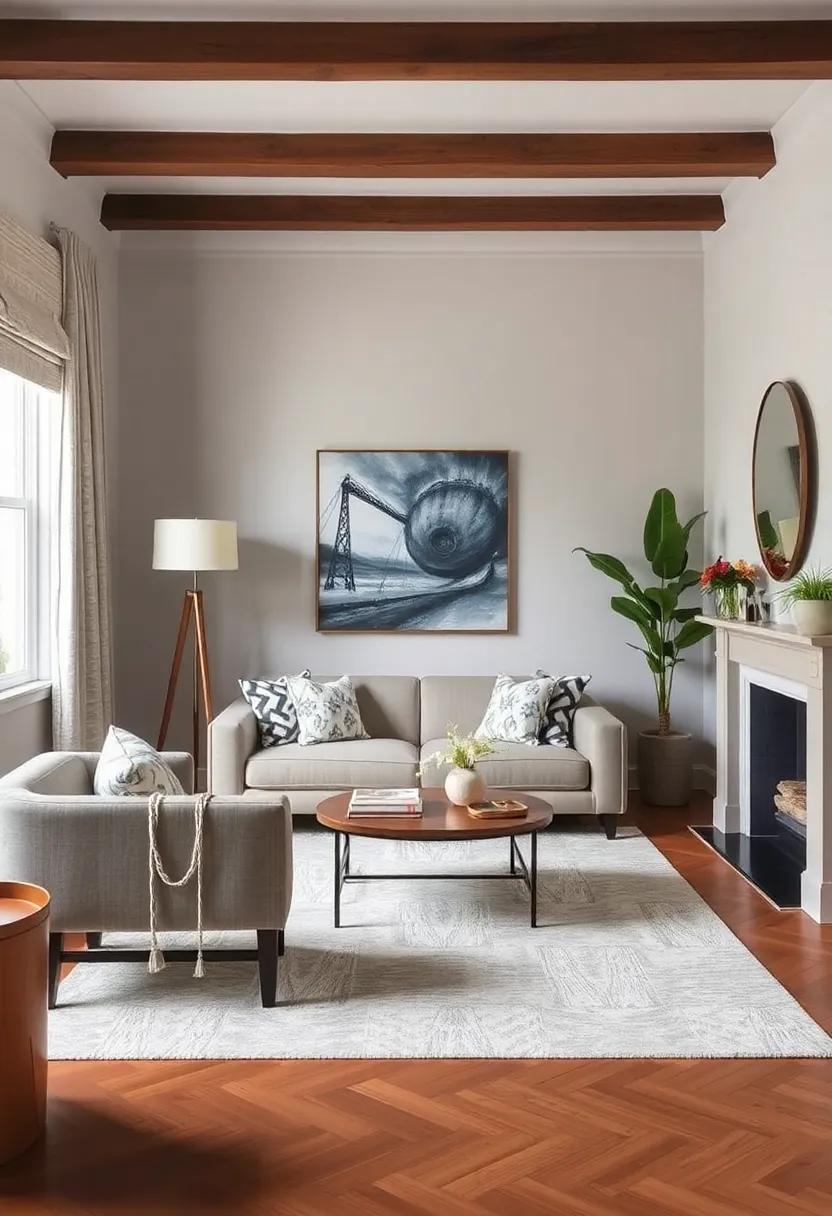
In a small living room, the choice of fabrics can dramatically influence the ambiance and comfort of the space. Layered textures add depth and interest while also enhancing tactile experiences. By using a mix of materials, homeowners can create a warmer and more inviting atmosphere. For example, consider pairing a soft velvet sofa with textured wool or knitted throw blankets. This blend not only adds visual intrigue but also encourages cozy gatherings, making it a perfect spot for relaxation.
Enhancing the room’s aesthetic can also be achieved through carefully chosen accessories. Cushions in varied fabrics, such as linen, silk, or faux fur, can be artfully arranged on seating to introduce contrasting textures. Combining different patterns, like stripes or floral prints, can create a stunning visual effect and help draw the eye across the room. Furthermore, curtains in sheer, flowing fabrics can lighten the space, allowing natural light to filter through, thereby creating an airy feeling that makes a small living area feel larger.
Creative Wall Décor: Maximizing Space with Art and Shelving
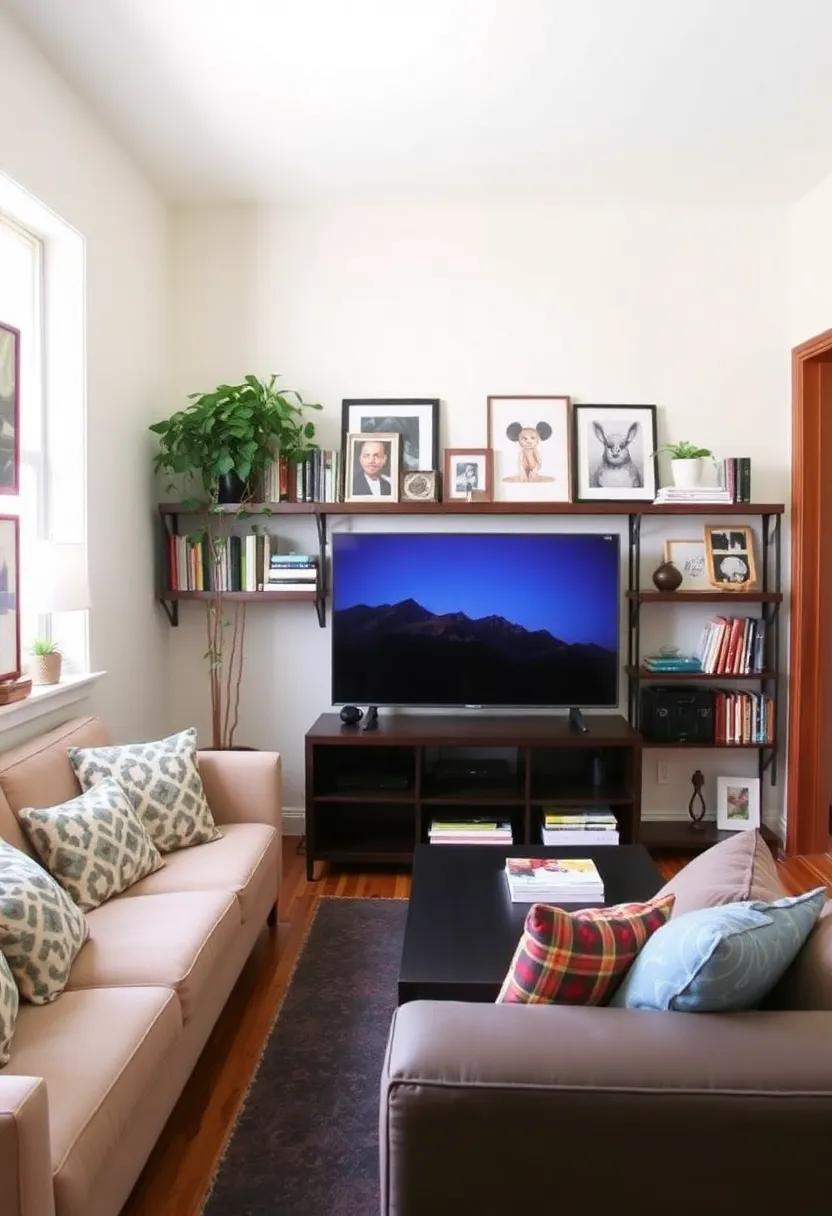
Transform the vertical space in your small living room by combining art and shelving in innovative ways. Wall-mounted shelves not only serve a functional purpose but also act as an artistic display when arranged with care. Consider creating a gallery wall that showcases a mix of framed photographs,artwork,and decorative items. use different sizes and shapes to add depth, and don’t shy away from integrating some floating shelves to hold plants, books, or unique collections that reflect your personality.
Incorporating various materials will enhance the overall look. Try mixing wood finishes with metal brackets, or introducing textured wall panels behind your shelves to create a stunning backdrop. Here are some tips to maximize your design:
- Use Multi-functional Pieces: Opt for shelving that doubles as a work of art.
- Layering: Layer pictures and objects to create dimension.
- Color Coordination: Stick to a cohesive color palette for a polished appearance.
| Art Style | Best Use |
|---|---|
| abstract | Modern aesthetic; brightens space |
| nature-themed | Brings tranquility; ideal for minimalists |
| Personal photos | Personal touch; evokes memories |
Clever Use of Mirrors: Reflection Techniques to Amp Up space Perception
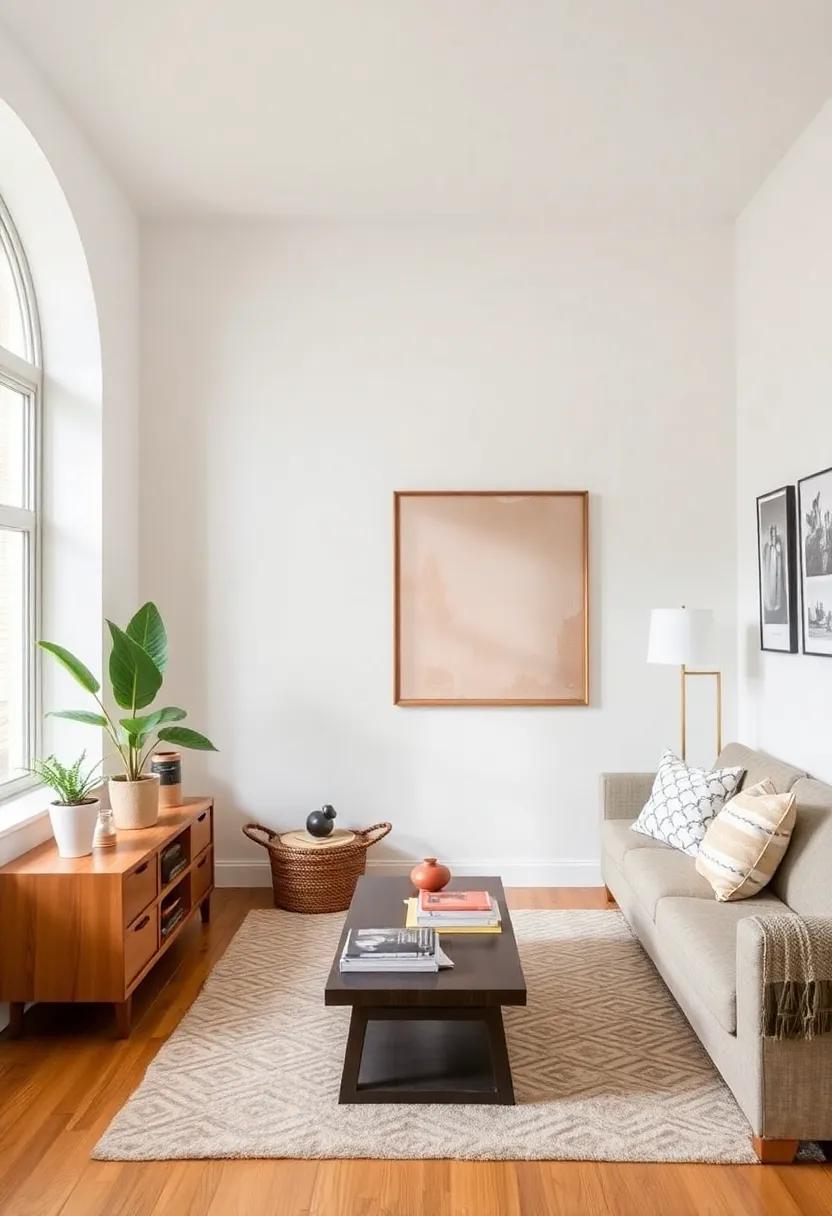
Mirrors are exceptional tools for enhancing the visual space in your small living room. By placing a large mirror opposite a window,you can invite natural light to dance throughout the room,instantly enlarging the atmosphere. Additionally, consider using framed mirrors that reflect style while creating depth. They can become captivating focal points as well as practical design elements. To maximize efficacy, think about positioning a series of small mirrors in a gallery-style arrangement. This not only adds visual interest but also the illusion of expanded space.
Incorporating mirrors into your room doesn’t have to be a one-size-fits-all approach.Get creative with different styles: vintage, modern, or eclectic – each can offer a unique charm.Consider these tips when styling your mirrors:
- Backlit Mirror: Adds warmth and creates ambiance.
- Floor-to-Ceiling: Draws the eye upward, making the ceiling seem higher.
- Mirrored Furniture: Use nesting tables or cabinets to reflect light and texture.
The Power of Decluttering: Creating a Calm and Spacious Environment

Decluttering is more than just organizing; it’s about creating a harmonious space that invites tranquility and style.When you clear away the excess, you allow your living room to breathe, transforming it into a sanctuary where relaxation is paramount. Begin by evaluating every item and asking yourself if it serves a purpose or brings joy. By embracing the principle of minimalism, you can curate a collection of beloved pieces that reflect your personality and enhance the overall aesthetic.
To maintain a calm environment, consider incorporating multi-functional furniture into your small living room. This not only maximizes space but also adds flair to your decor. Some ideas include:
- Ottomans with storage: Perfect for seating and stashing away blankets or magazines.
- Wall-mounted shelves: Utilize vertical space for decor, books, or plants without sacrificing floor area.
- Foldable tables: Easily expand your seating for guests and collapse for everyday use.
By intentionally selecting each element in the room and prioritizing functionality,you foster an atmosphere that is both inviting and serene.
Smart Storage Solutions: Hiding Clutter in Plain Sight
Finding ingenious ways to conceal your clutter while maintaining an appealing aesthetic can transform your small living room into a chic and organized space. Consider investing in multi-functional furniture such as a stylish coffee table with hidden compartments or a sleek ottoman that doubles as storage. These pieces not only serve their intended purpose but also provide a discreet way to stow away blankets, magazines, and other items that would otherwise contribute to visual chaos. Additionally, leveraging your vertical space can be a game-changer. Utilize wall-mounted shelves to display decorative items and use chic bins or baskets to neatly hide away less visually appealing essentials.
Smart storage can often come from unexpected places. Incorporate furniture designs that feature clever storage solutions, like a sofa with built-in storage underneath or a console table with drawers. These options allow you to keep items easily accessible while still maintaining an uncluttered environment. Don’t forget to capitalize on the often-overlooked areas of your room. Adding hooks or floating shelves near entryways provides an excellent spot for bags, hats, or keys, while also contributing to your decor. Here are a few ideas to spark your creativity:
- Under-bed storage: Use bins for off-season items.
- Cushions with zippers: Store items inside them for a softer arrangement.
- Behind-the-door organizers: Perfect for shoes or other slim items.
Personalized Touches: Infusing Character into a Compact Living Area
Injecting personality into a small living space can transform it from a mundane box into a vibrant haven. Start by incorporating personal artifacts that tell your story—think framed art, travel souvenirs, or heirloom pieces that spark conversation. When selecting decor, opt for multi-functional items; a vintage trunk can serve as both a chic coffee table and a smart storage solution. Invest in bold textiles—a vibrant throw or uniquely patterned cushions can lift the ambiance without overwhelming the eye.
Another way to personalize your compact haven is through color schemes that reflect your style. A curated palette, like soft pastels or rich jewel tones, can create a cohesive look that feels both inviting and stylish.Utilize vertical space for display, such as floating shelves that showcase your favorite books and art. For a touch of greenery, consider a mini indoor garden with hanging planters—these not only enhance air quality but also add a fresh, lively atmosphere.Below is a simple guide on materials that can maximize storage while enhancing style.
| material | Benefit |
|---|---|
| Wood | Classic warmth and versatility |
| Metal | Industrial edge with durability |
| Glass | Creates an airy feel and visual space |
| Fabric | Adds comfort and color |
Outdoor-Inspired Elements: Bringing Nature Inside for a Fresh Vibe
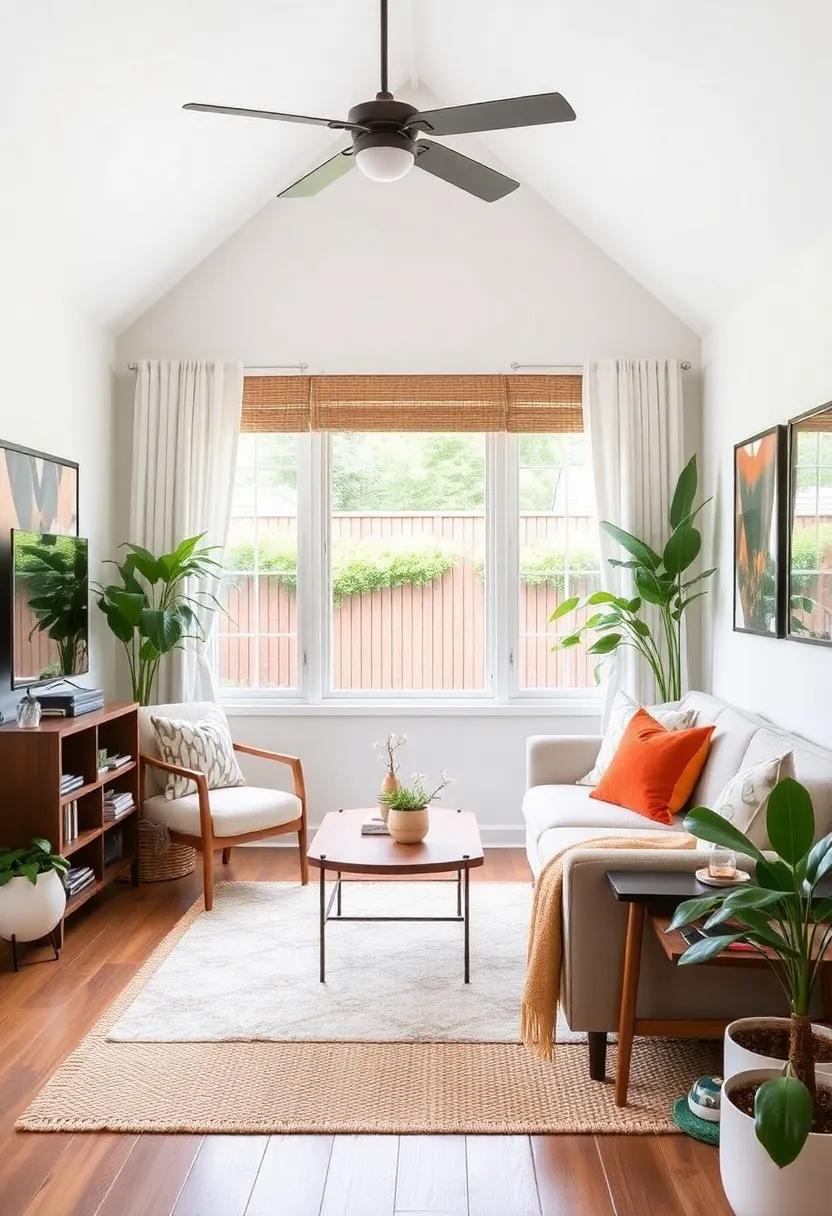
Infusing your small living room with outdoor-inspired elements can breathe new life into your space while maintaining a fresh, airy vibe. Consider incorporating natural materials into your decor,such as bamboo furniture or jute rugs,which add texture and warmth. Succulents and indoor plants not only enhance the aesthetic appeal but also improve air quality. You might even try hanging planters to utilize vertical space without sacrificing floor area. By selecting a soft color palette, reminiscent of nature—think muted greens, earthy browns, and sky blues—you can create a serene atmosphere perfect for unwinding after a long day.
To bring in the feeling of the outdoors, think about using decorative accents that reflect nature’s beauty. Features like wooden shelves adorned with nature-inspired decor items or artwork depicting landscapes can spark joy and inspiration. For a cohesive look, integrate a nature-themed color scheme into your upholstery and cushions, favoring fabrics with botanical prints or natural fibers. You can also enhance the feeling of spaciousness by using mirrors to reflect light, mimicking sunlight’s effect on an open terrace.By blending these elements thoughtfully, your small living room can transform into a rejuvenating retreat that invites the beauty of the great outdoors inside.
Open Concept Living: Merging Areas for Seamless Flow and Style
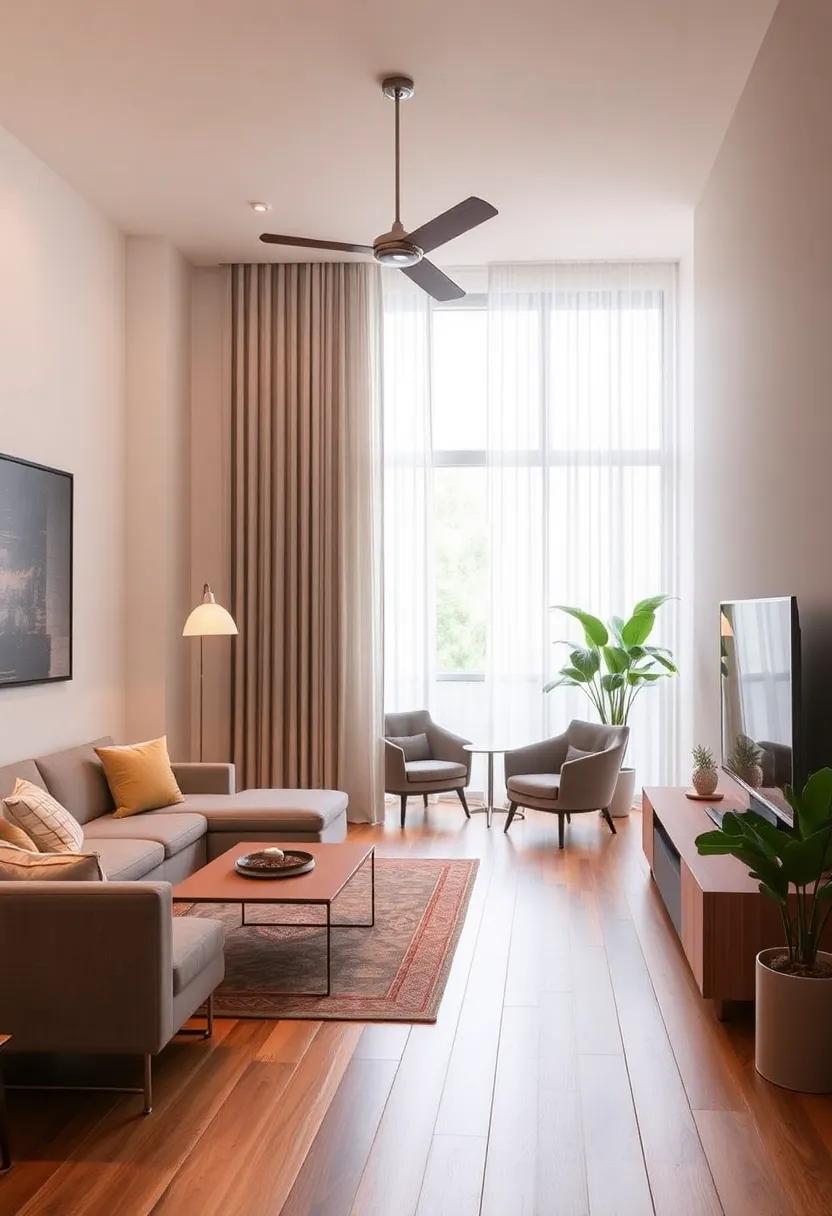
Open-concept living reimagines how we interact with our spaces, crafting an environment that exudes both style and functionality. When designing your small living room, focus on merging designated areas to create a continuous flow, which not only visually expands the space but also enhances your lifestyle. Consider using a cohesive color palette across multifunctional zones, such as a living area, dining space, and workspace, to foster a sense of unity. Implement movable furnishings, like ottomans and folding tables, which can easily transition between uses and provide additional seating when needed without overwhelming your space.
Incorporating smart storage solutions further complements this seamless design. Utilize vertical space by installing shelves that draw the eye upward, while also housing books, plants, and decorative items. Below is a comparison of effective space-saving options:
| Furniture Type | Benefits |
|---|---|
| Storage Ottomans | Dual purpose: seating and storage for blankets and magazines. |
| Wall-mounted Desks | Space-efficient and can be folded away when not in use. |
| Corner Shelves | Maximize unused corners to display decor and books. |
By embracing these creative strategies, you can achieve a modern living area that is both functional and chic, perfectly suited for your lifestyle in a small setting.
Rug Selection: Enhancing Space with the right Size and Design
Choosing the right rug can truly transform your small living room,making it feel larger and more cohesive. When selecting a rug, consider the following aspects:
- Size: Opt for a rug that complements the scale of your furniture. A common guideline is to have the front legs of your furniture on the rug to create an inviting space.
- Shape: Rectangular rugs work well for elongated spaces, while round rugs can soften harsh angles and add a unique touch.
- Color & Pattern: Light-colored and subtle patterned rugs can help to visually expand a small room,while bold designs can serve as statement pieces.
Incorporating the right rug goes beyond mere aesthetics; it also enhances the functionality of your space. Consider putting together a small table and chairs on the rug to establish a cozy nook. Alternatively, layer rugs for added texture and warmth. Here’s a simple table to guide your selection:
| Rug Type | Best Suited for | style Impact |
|---|---|---|
| Flatweave | Tight spaces with high traffic | Casual and modern |
| Shag | Cozy seating areas | Warm and inviting |
| Patterned | Creating focal points | Bold and dynamic |
Furniture Arrangement: Optimizing Layout for Comfort and Function
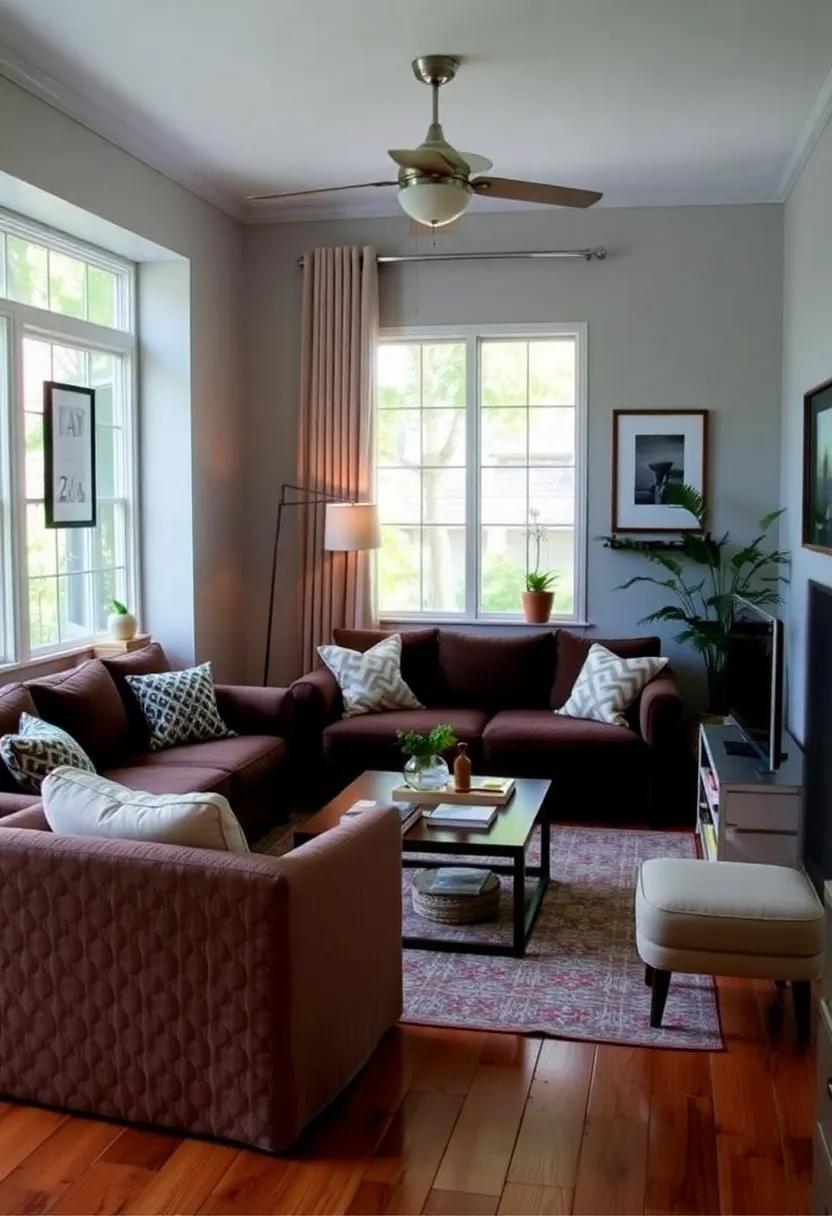
Creating a harmonious layout in your small living room starts with understanding the traffic flow. Position your furniture to allow for easy movement and prevent any clutter. Consider these layout strategies:
- Use a central focal point: Position your seating around a coffee table or TV to establish a gathering area.
- Incorporate multi-functional furniture: opt for ottomans that double as storage or side tables that can be easily moved.
- Define zones: Use area rugs to separate different functional spaces, like a reading corner or a conversation area.
In addition, experiment with vertical space to optimize your layout. This approach not only enhances style but also frees up floor space. Here are a few tips:
- Install shelves: Floating shelves add storage without overwhelming the room.
- Utilize tall furniture: Select bookcases or cabinets that draw the eye upward, making the room feel taller.
- Hang artwork or mirrors: Strategically placed art can create depth and visual interest, making the space feel larger.
Colorful Accents: Using Accessories to Add Flair without Overloading
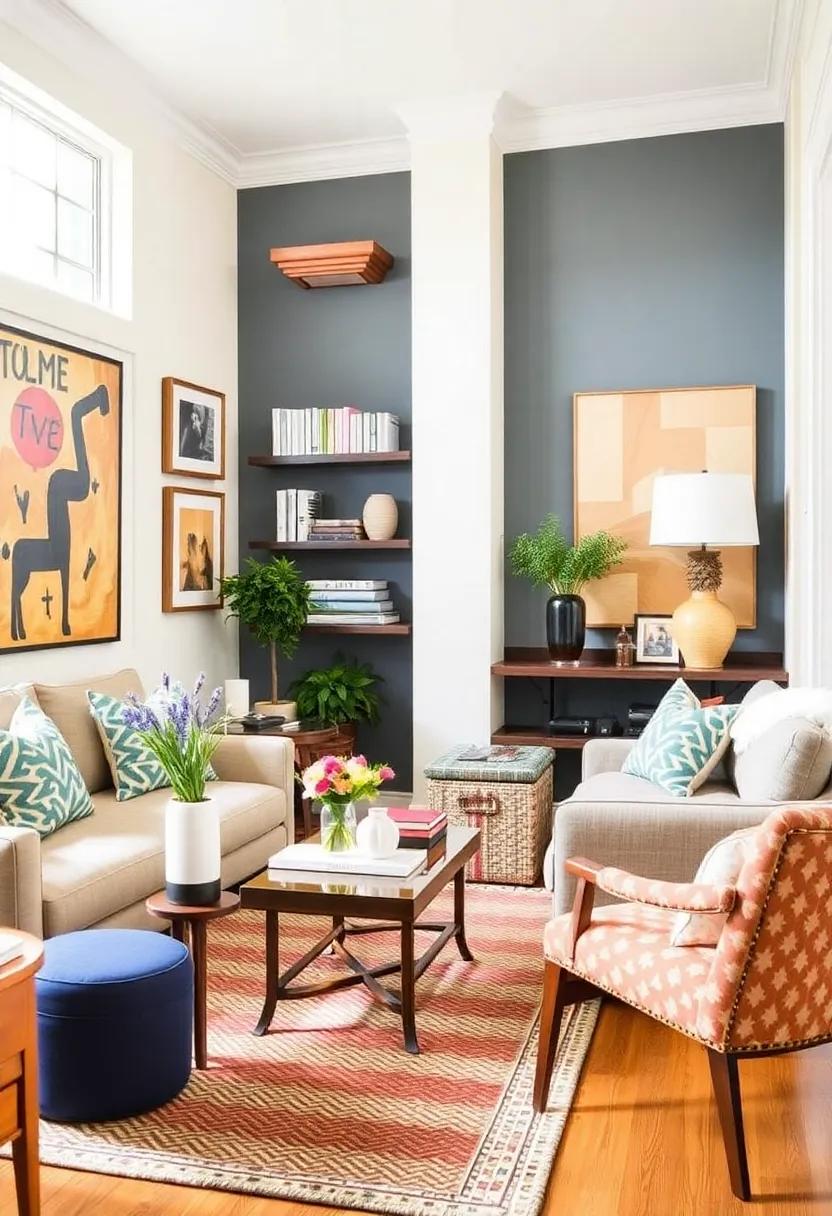
Injecting a burst of color into a small living room can transform the space while still maintaining a balanced aesthetic. Accessories are your best friends in this endeavor, allowing you to play with vibrant hues without overwhelming the room. Whether it’s through decorative pillows, an eye-catching rug, or a statement piece of art, you can create focal points that attract attention. Consider incorporating various textures and patterns in your accessories to add depth and interest. Here are some ideas to consider:
- Throw Pillows: Mix and match bright colors and unique patterns.
- Art Prints: Choose pieces with pops of color that resonate with the room’s existing palette.
- Vases: Opt for bold,sculptural designs in vivid colors for your tabletop.
When selecting accent items, consider making intentional choices that contribute to a cohesive look rather than randomness. A well-placed splash of color can bring a refreshing energy to a compact space. Practical storage solutions can double as accessories, such as colorful ottomans or stylish baskets, that complement your decor while serving a functional purpose. Here’s a handy reference for choosing the right accent pieces:
| Accessory Type | Relevant Color Palette | Best Placement |
|---|---|---|
| Accent Chairs | Crimson, Teal | Corner or opposite sofa |
| Wall Art | Mustard Yellow, Navy Blue | Above a sofa or a console table |
| Rugs | Emerald Green, coral | Under coffee table |
Creating focal Points: Drawing the Eye to Key Elements in Your Room
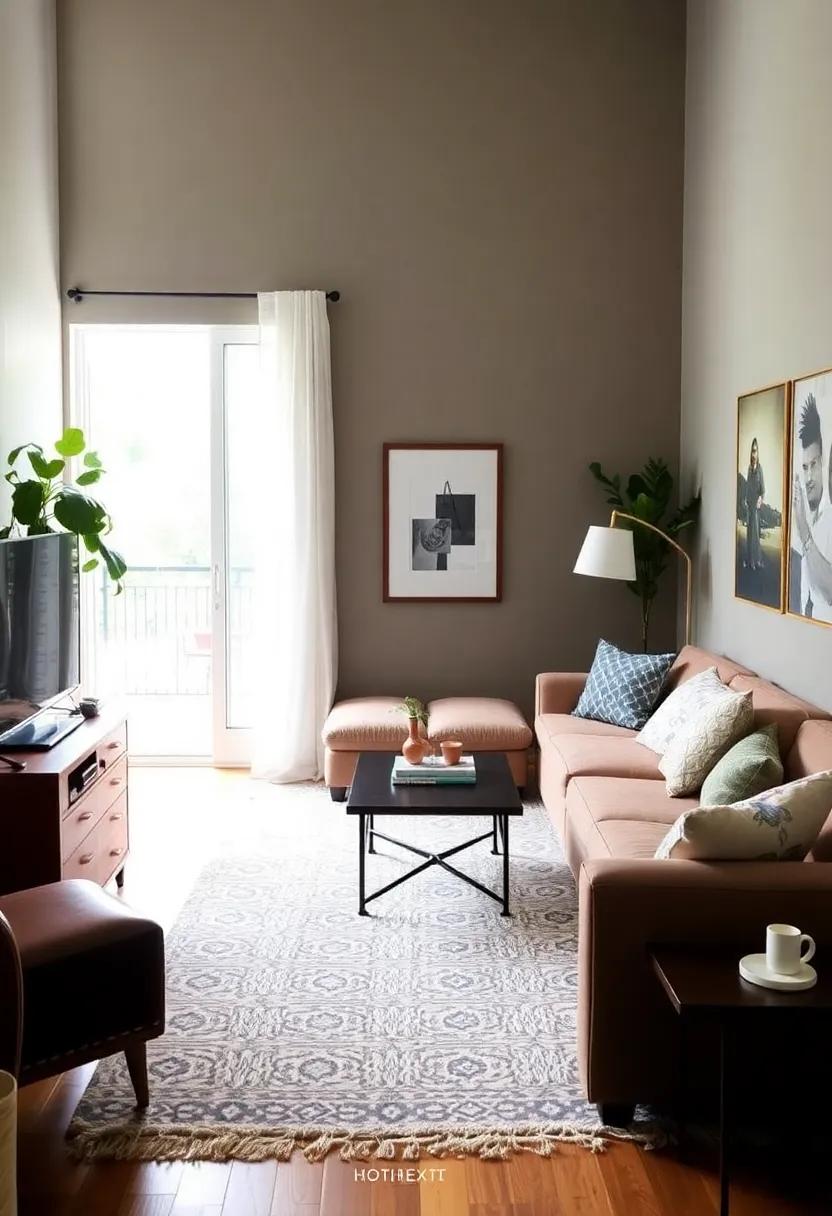
In a small living room, it’s crucial to create visual interest while maintaining a harmonious flow.One effective strategy is to incorporate bold decor pieces that draw the eye and anchor the space. Consider using an oversized piece of artwork or a striking gallery wall. These focal points can make a small room feel larger and more dynamic. Additionally,a statement furniture piece,such as a uniquely designed coffee table or a colorful lounge chair,can serve as a conversation starter while also fulfilling a functional role. Layering textures with cushions and throws on these standout pieces enhances their visual appeal.
lighting can also play a pivotal role in highlighting key elements within your living area. Employ multi-layered lighting by mixing sources such as floor lamps, wall sconces, and pendant lights. Directing light towards your focal points will create depth and invite warmth into the room. Moreover, the strategic placement of mirrors will not only reflect light but also amplify the features you wish to emphasize. Here’s a simple way to arrange your lighting sources:
| lighting Source | Purpose |
|---|---|
| Floor lamp | creates warmth around seating areas |
| Wall Sconce | Highlights artwork or architectural features |
| Pendant Light | Illuminates dining or coffee table focal points |
| Decorative Mirrors | Enhances light and depth, reflecting key views |
Smart Use of Rugs: Defining Spaces in an Open Layout
In an open floor plan, rugs can be transformative, establishing distinct zones while adding character to your living space. Choosing the right rug involves considering factors like size, color, and texture. Opt for large area rugs that can anchor your furniture and visually delineate different areas, such as a seating nook or dining spot. To enhance the overall cohesion, select rugs that complement the dominant color scheme of your decor, creating flow throughout the space.
Layering rugs is another clever strategy to enhance the look and feel of your small living room. Combining different textures and patterns can add depth and interest. as an example, you might place a plush, neutral rug under a more vibrant, patterned one to define the seating area while still keeping the overall aesthetic harmonious. Additionally, using round rugs can soften the angles of furniture and create a friendlier atmosphere, perfect for spaces that invite social interaction.
Nesting Tables: The Ultimate Space-Saving Addition for any Room

Nesting tables are a versatile solution for any small living room, offering not only practicality but also a dash of style. These table sets typically consist of two or more tables of varying sizes that can be both stacked together or spread out as needed, allowing you to maximize your available space. Their compact design means they can easily tuck away when not in use,making them ideal for creating a clutter-free environment.The variety in design—from sleek modern finishes to rustic wood textures—means you can find the perfect fit for your decor, enhancing your living room’s aesthetic.
When utilizing nesting tables, consider the following benefits to enhance your space:
- Flexibility: Use them as side tables when entertaining guests, and easily store them away afterward.
- Multi-functionality: Whether for drinks, snacks, or decorative displays, these tables serve multiple purposes.
- Layered Look: Arrange them in varying heights for a visually appealing and dynamic table arrangement.
To help you visualize how to incorporate nesting tables into your small living room, here’s a simple table that compares some popular styles:
| Style | Material | Best Features |
|---|---|---|
| Mid-Century Modern | Walnut Wood | Warmth & Retro Charm |
| Industrial Chic | Metal & Glass | Durable & Stylish |
| Scandinavian minimalist | Birch Plywood | simple & Functional |
Concluding Remarks
As we wrap up our exploration of innovative ways to elevate your small living room, remember that style and functionality can harmoniously coexist, even in the coziest of spaces. Embracing creativity in your design choices not only maximizes your room’s potential but also infuses it with your unique personality. From multifunctional furniture to creative decor solutions, each tip serves as a stepping stone towards transforming your small haven into a stylish retreat.Don’t forget, the essence of a well-styled living space lies in the details—like choosing the right colors, textures, and arrangements that resonate with you. So, take a step back, envision your dream living area, and delve into the art of space-saving design. With the right approach, your small living room can become a delightful showcase of your lifestyle, preferences, and creativity. Happy decorating!

